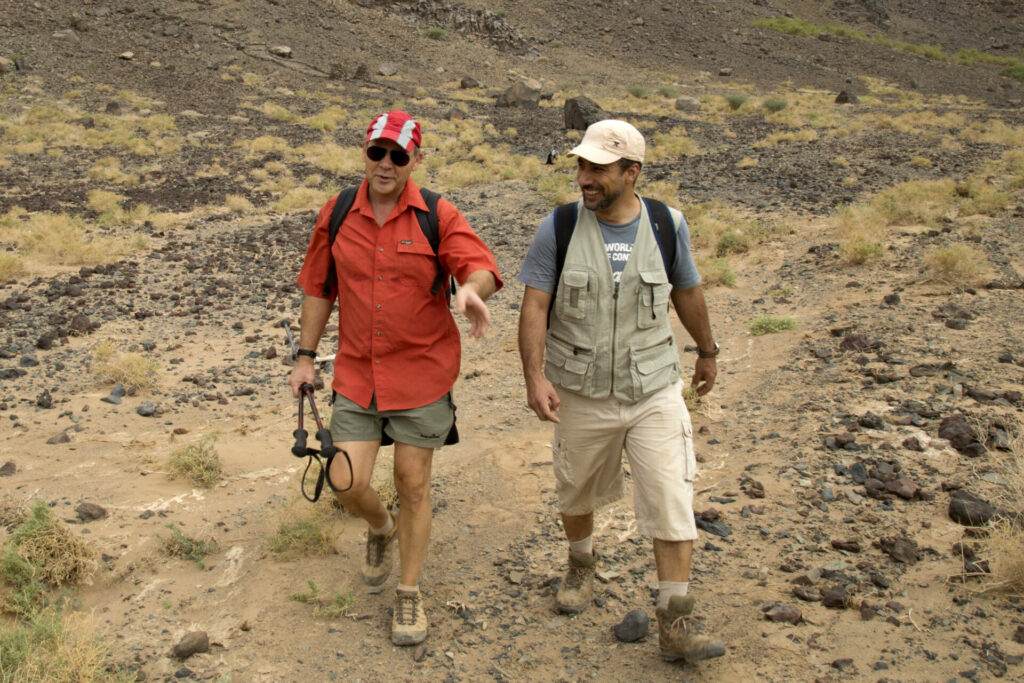A fascination with desert plants and their survival mechanisms has led to a game-changing discovery for improving crop productivity under stress conditions.
KAUST researchers believe that desert bacteria could hold the key to improving both plant and human health. They are examining the beneficial role of these microbes and how to extend their benefits to crop plants.

Heribert Hirt and his team study the survival mechanism of plants living under extreme conditions, such as drought, excessive salt or heat. They then apply this knowledge to crop plants to re-establish agriculture in arid regions or under difficult environmental conditions.
Hirt has identified how microbes interact with plants to assist their survival and, over the past eight years, his team at KAUST has collected several thousand strains of such microbes from deserts all over the Middle East.
Their groundbreaking achievement was to show that many of the microbes living in the roots of desert plants are not host specific. They then went on to successfully transfer these microbes to other plant species.
Senior research scientist Maged Saad says one of the challenges was how to make the beneficial microbes available to small-scale desert farmers.
To solve this challenge, they developed a seed-coating technology for selected microbes. With funding from KAUST, the team provided small quantities of bacteria-coated seeds to smallholder farmers in Saudi Arabia to test on crops, including cucumbers, tomatoes and alfalfa.
Hirt believes these beneficial soil microbes could be the “magic bullet” for agriculture this century, helping plants to grow under drought conditions, salt stress and extreme temperatures.
“Desert microbes are well adapted to extreme environmental conditions, such as heat and high salinity. They help desert plants thrive in these conditions, providing nutrients and enhancing plant tolerance to high temperatures and scarce water,” he explains.
For example, Hirt’s team has identified one strain of bacteria that makes plants more resistant to drought by enhancing water-use efficiency. “We can reduce water irrigation by 30-40 percent, while still maintaining yields,” says Hirt.
“The Food and Agriculture Organization estimates that farmers will need to produce 70 percent more food by 2050 to meet the needs of the world’s growing population. If you can enhance crop productivity without the use of synthetic fertilizers or pesticides, it’s a game changer,” he says.
“We need fast and low-cost solutions that are affordable and accessible to subsistence farmers who eat what they grow.” Saad says their research is helping to address global challenges such as climate change, food security and sustainability, and it could lead to applications in human health through potential new antibiotics and genetic tools, for example.

Microorganisms help plants cope with arid conditions
Another team, led by Daniele Daffonchio, is also exploiting microbial diversity to promote plant growth in arid soils. The team is investigating the ecology of microorganisms in desert ecosystems, particularly microorganisms associated with desert plants.
“The microorganisms, together with the soil, rhizosphere and root endosphere, function as interactive communities of diverse microbial types that also interact with the plant host, soil matrix and surrounding environmental factors in a complex interactome network,” says Daffonchio.
His team investigates how this interactome influences plant root colonization and plant growth. Researchers are examining environmental factors like temperature, humidity, drought, salinity and the chemical landscape at the soil-root interface, as well as the type of plant species and their associations.
Microbiologist Ramona Marasco studies assemblages of microbial communities in wild desert plants and in cultivated species, such as date palms, under different climatic conditions and soil types. Her work shows that date palms, like other desert plants, always recruit very similar microbial communities made of selected plant growth promoters that alleviate drought stress, despite the diverse pool of microorganisms available.
“This type of conserved selection is dictated by the extreme conditions of the desert soil and of the desert environments, which restricts the choice available to the plants,” Daffonchio says.
In considering the complex soil microbial community and extreme conditions of the desert ecosystem, it is important to assess and understand the ecology of the root system at the microbial community scale. “This is where the action lies in terms of plant-growth-promoting microorganisms, either natural or added as inoculants, exerting their beneficial effects,” Daffonchio says.
Lessons from extremophiles
Bioscientist Alexandre Rosado has also developed an interest in microbes from several Saudi ecosystems, including deserts and volcanoes, through his research on organisms that thrive in extreme environments, known as extremophiles.
His research has identified one family of desert bacteria that can thrive with only trace amounts of carbon dioxide and can assimilate nitrogen with high efficiency.
He says these novel mechanisms of nitrogen and carbon fixation could lead to new biotechnological products for sustainable agriculture and bioenergy.
“Possible biotechnological applications may include further development of genetically modified plants capable of using nitrogen with little or no chemical fertilizer.”
Rosado is also interested in how microbes that are successful in extreme environments could have applications for space colonization.

